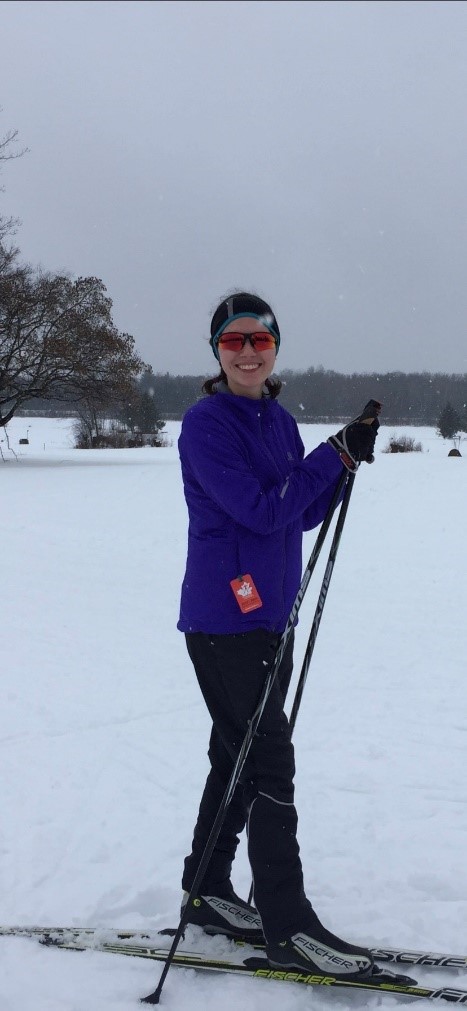Unlocking a Life of Possibilities with Home Parenteral Nutrition
For 19-year-old Nutrition and Food Science student Trinity, home parenteral nutrition provides the opportunity to live an unencumbered life.
Globally, the number of people who require home parenteral nutrition (PN), a form of nutrition delivered directly into the bloodstream, is growing. Also known as total parenteral nutrition (TPN) or intravenous (IV) feeding, there are many reasons why PN is prescribed, including for people with intestinal disorders, such as Crohn’s, colitis, and gastroparesis or those who have cancer, strokes, or Parkinson's disease, among other things. But home parenteral nutrition can mean expanded flexibility and freedom, providing the ability to manage nutritional intake outside of the hospital and offering the opportunity to continue daily activities like work and travel.
As part of Home Parenteral Nutrition Week taking place October 11–15, we spoke with Trinity, a second-year student at the University of Ottawa about her health journey, the transition to home parenteral nutrition and her plans for the future.
 Tell us a little about yourself.
Tell us a little about yourself.
I was born and raised in Ottawa, Canada along with five siblings and am bilingual in English and French. Growing up, I was a competitive athlete and participated in flying, gliding, and target shooting, among other activities, through the Royal Air Cadets, a national youth program in Canada. I flew a plane when I was 14!
When I'm not studying Nutrition and Food Science at the University of Ottawa, I enjoy hiking, listening to music (especially Taylor Swift) and cooking in my new apartment.
How did your PN journey start?
In high school, I started having trouble tolerating and digesting food. Initially, I received a feeding tube (enteral nutrition), but that wasn't helping.
After a lot of tests and visits with different specialists, my care team determined that a connective tissue disorder and vascular compressions were contributing to my digestion issues. In 2018, I began parenteral nutrition in the hospital.
In Canada, there are cities where you can do home PN, but it was not offered through my specific Children's Hospital or in Ottawa for children under 18. After about two years of inpatient treatment, in 2020, I was able to begin PN at home.
What surprised you most about beginning PN?
When I started PN, at times I felt isolated and frustrated by my situation, but I really tried to focus on advocating for myself and gaining weight.
My care team at the hospital did everything possible to "de-medicalize" my condition and provide as much of a normal experience for me and the other people on parenteral nutrition as possible. I also had a great relationship with my dietician; she inspired me to pursue an education in nutrition.
How did you navigate the transition to life on home PN?
My transition to home parenteral nutrition happened at the start of the COVID-19 pandemic which in some ways was a blessing. I was able to participate in school online, and as I got more involved in my nutrition program, I found a great community of people who understand the limitations that food sensitivities or other health conditions could bring. Generally, people don't even ask me why I'm not eating. If they do, it comes from a place of seeking education.
What do you hope for the future of patients who require home PN?
It's important to recognize how hard and awful going through any serious health situation can be. It just takes someone else acknowledging the difficulty and challenges along the way to have your feelings validated – not from a place of pity, but one of support.
While in a perfect world, I would love to eat "normally," there are a lot of positives with home parenteral nutrition. I am able to do most of my normal activities like hiking, and I don't get tired from carrying a backpack like I used to before. In fact, two days after I was discharged from the hospital, I was able to travel to Montreal to see a concert. Without home PN, I wouldn’t have been able to do that.
What's next for you?
As the world starts to reopen, I want to get back to traveling and pursuing my goal of becoming a dietician. After graduation, I'd love to work for the United Kingdom’s National Health System and live in Scotland.
A special thanks to Trinity for sharing her story. For more information on parenteral and enteral nutrition resources, visit the The OLEY Foundation .